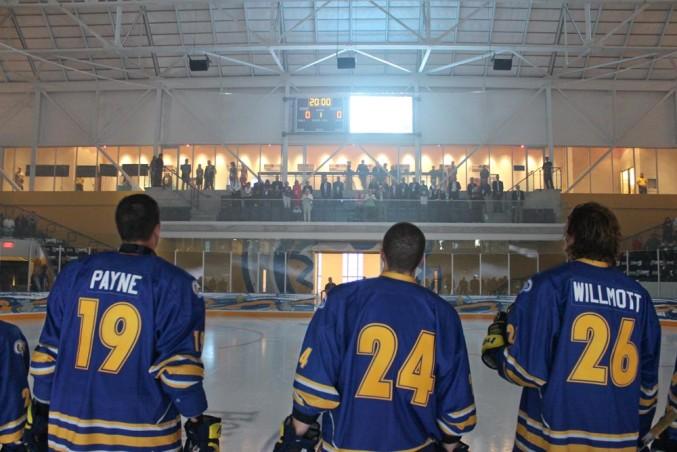By Sean Tepper
During its glory days Maple Leaf Gardens (MLG) was a cultural pillar for Canada’s largest multicultural city.
Dubbed “the cathedral of hockey,” Toronto Maple Leafs fans would flock from all over the Greater Toronto Area to catch a game at the venerable rink on the corner of Church and Carlton.
That is until Feb. 13 1999, when the final puck dropped at the Gardens, ending the Leafs’ 68- year run at their historic home.
For nearly a decade the once booming arena lay dormant, a forgotten relic of the past.
With the hockey murals in the College subway station serving as one of the few reminders of its existence, it appeared as if the city had all but moved on before Ryerson and Loblaws Co. purchased the heritage building in Dec. 2009.
Now, more than 13 years and $60 million later, Ryerson has transformed MLG into the Mattamy Athletic Centre (MAC), a state-of the-art multi-functional athletic and recreational facility aimed at establishing an identity for the school’s rising athletics programs and student-body.
But in a district that includes million-dollar homes in Rosedale, a student ghetto and most of Toronto’s LGBT community, the area that makes up Ward 27 is having an identity crisis of its own, making the MAC’s significance extend far beyond the boundaries of Ryerson’s urban campus.
That urban campus, with its commuter student-body, has long made community-building difficult. But Ryerson director of athletics Ivan Joseph has seen the power a building has to unite a community. Before he took over at Ryerson in 2008, Ivan Joseph lived in tiny Lamoni, Iowa for 17 years.
It was there that he noted the power that sports had in building and binding a multicultural community.
“When I lived in Iowa it was a town of 2000 and there was one school that served to bring all your neighbours together because it’s your children that connect you,” he said. “So in a great way the Gardens can serve that, it can be a community centre and a gathering place for the people in our community.”
Despite being home to more than 67,000 residents, Ward 27 boasts a single hockey rink. Located at the John Innes Community Centre in Moss Park, that arena houses a number of amateur leagues and community programs, making its availability scarce at the best of times.
“When Ryerson comes knocking at the door of the city of Toronto we try to assist them and the relationship has been very reciprocal,” said Ward 27 councilor Kristyn Wong-Tam. “We know that there’s not a lot of ice time that’s available for the area so any bit that we get is very welcomed.”
Although it has only been open for three weeks, Ryerson has already planned a number of community outreach programs for its new facility. Free monthly skates and shinny hockey games are open to the community and memberships to the gym are available for $699 per year.
Similarly, the rink can be rented out for public events at an hourly rate of either $200 or $300, depending on the time of day. Currently the MAC is open from 6 a.m. to 11 p.m. during the week and 9 a.m. to 6 p.m. on the weekends, but Ryerson President Sheldon Levy is hoping to make it a 24-hour-a-day operation.
“My dream is that it’s so used that you would never close it,” he said.
Reaching out to the community- at-large may be one of the university’s major priorities. Shauna Bookal, Ryerson’s athletic events coordinator, believes that that begins with its youth. In addition to its Rising Rams program, which sees Ryerson athletes traveling to various elementary schools to discuss the aspects of being a student athlete, Ryerson will be launching a new youth outreach program this January.
In a partnership with Loblaws, Canadian Tire, the Toronto Police and the NHL Players Association, the “Rams in Training” program aims to grow the current Moss Park Hockey League and expose underprivileged youth to a structured university lifestyle. “The children are our future and we definitely want them to feel like this is their home and they can also come here,” Bookal said.
Though both Joseph and Levy acknowledge that the MAC goes beyond the university and into the community, they have made it clear that the students, who are paying for one-third of the centre’s $60-million price tag, will always come first. “
Our first goal is to serve our students but there has to be a balance because we have to keep the lights on,” said Joseph. “I get my greatest thrill in seeing how it will transform the lives of the students around us.”











Leave a Reply